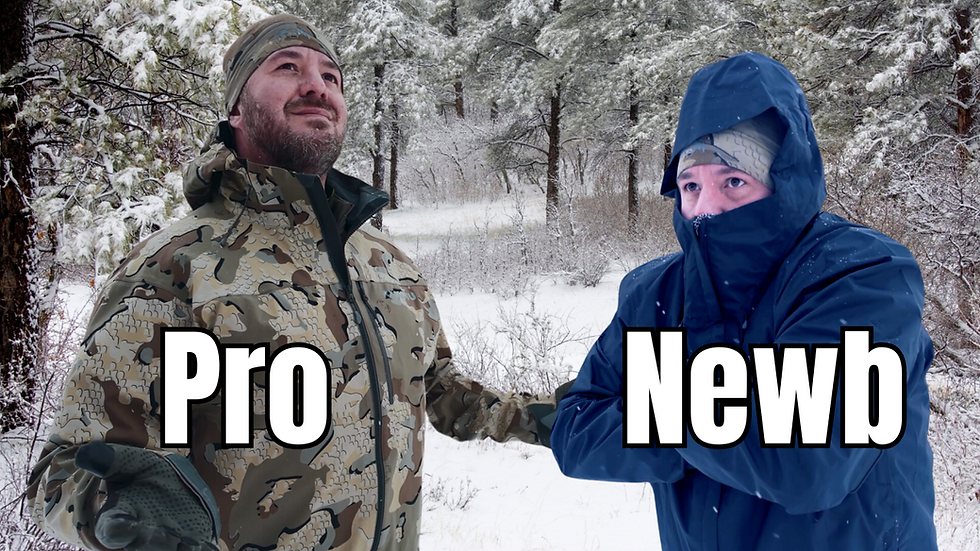How to Build a Backpacking First Aid Kit That Actually Works
- Jeremy Ward

- Jan 22
- 3 min read
Updated: Feb 2
*This post contains affiliate links. That means that if you make a purchase after clicking on a link I may earn a small commission at no extra cost to you. For more information, click here.

A first aid kit can be the difference between a minor inconvenience and a serious situation in the backcountry. But carrying a fully stocked medical bag isn’t practical—your kit needs to be lightweight, compact, and tailored to your specific needs.
Many people overpack their first aid kits without fully understanding how to use the contents. Instead of carrying unnecessary weight, the goal is to build a backpacking first aid kit that’s effective, organized, and practical for real-world situations.
This guide will walk you through essential components, how to pack your kit efficiently, and key upgrades that can make all the difference when you're far from help.
Essentials: What Every Backpacking First Aid Kit Should Include
A great first aid kit doesn’t need to be bulky. Focus on the most common injuries and ailments you may encounter while hiking, hunting, or backpacking.
1. Wound Care
Cuts, scrapes, and minor injuries happen frequently. A streamlined wound care kit should include:
2. Blister Prevention & Treatment
Blisters can turn a great hike into a painful struggle. Carry:
Small strip of duct tape
Tip: Knowing how to apply moleskin and tape properly can prevent blisters from worsening. Practice before your trip!
3. Medications
Carrying a small selection of medications ensures you’re prepared for common issues:
Antihistamines (for allergic reactions)
Pain relievers (Ibuprofen, Acetaminophen, Aspirin)
Antidiarrheal tablets
Antacids
4. Tools & Multi-Use Items
A few versatile tools go a long way in the backcountry:
Swiss Army knife or multi-tool like the LEATHERMAN Wave+
5. Personal Necessities
Make sure your kit includes your essential items:
Prescription medications
EpiPen (if needed)
Repair patches for gear
Organization: Packing for Quick Access
A well-organized first aid kit saves time in an emergency. Here’s how to keep it accessible and functional:
Use resealable bags to separate items into categories (wound care, blisters, meds, tools).
Label each bag for quick identification.
Store everything in a waterproof pouch to protect against rain or river crossings.
Choose a durable yet lightweight case—I use a Hilltop Packs Dyneema zip bag for my kit.
Smart Upgrades for Emergencies
If you’re heading deep into the wilderness, a few additions can significantly enhance your preparedness:
Athletic Tape – Can support a sprained ankle or secure a dressing.
Trauma Dressing or Israeli Bandage – Essential for severe bleeding. I like the Everlit Israeli Trauma Dressing.
Hemostatic Gauze (QuikClot) – Stops heavy bleeding quickly—great for hunters.
Tourniquet – Only useful if accessible within 30 seconds in an emergency (keep it on your belt, not in your pack). Try the official tourniquet for the U.S. Army, the North American Rescue C.A.T. Tourniquet.
Satellite Communicator – A must-have for emergency communication when cell service is unavailable. I like the Garmin InReach.
Training: The Most Important Tool
Your first aid kit is only as good as your ability to use it. Taking a wilderness first aid course is one of the best investments you can make in backcountry safety.
💡 Consider:
Basic First Aid & CPR – Essential knowledge for everyone.
Wilderness First Aid (WFA) – Great for frequent hikers and campers.
Wilderness First Responder (WFR) – More advanced training for serious backcountry adventurers.
The more knowledge you have, the better you can respond to injuries—even improvising when needed.
Regular Maintenance: Keep Your Kit Ready
A first aid kit is not a set-it-and-forget-it item. Routine checks ensure it’s fully stocked and ready when needed.
✅ Before each trip: Check medications for expiration dates and replace used items.
✅ After every trip: Replenish supplies like bandages and antiseptic wipes.
✅ Annual overhaul: Refresh all items and update medications if necessary.
Final Thoughts: Make It Work for You
A great first aid kit is not the one with the most gear—it’s the one you can use confidently. Tailor it to your needs, learn how to use each item, and keep it organized.
👉 What’s in your backcountry first aid kit? Let me know in the comments!
Watch the Full Breakdown on YouTube
📺 Watch the full video breakdown here:
If you found this guide helpful, share it with a friend and subscribe for more outdoor adventure tips.
Until next time, 1 Corinthians 10:31.






Comments